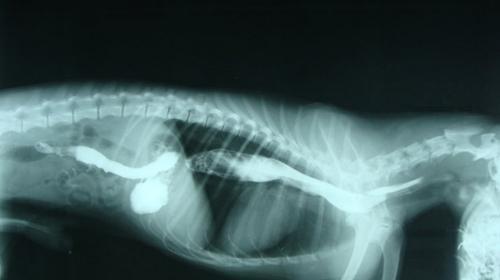German Shepherd (details introduction)
I. Pancreatic glands atrophism : PAA is a gastrointestinal disease caused by pancreatic glands caused by pancreatitis. This disease can cause insufficient external secretion of pancreatic glands. In the initial stage of the disease, the lymphocytes of lymphocytes of pancreatic tissue are expanded, and the expansion of the thick surface of the rough surface and mitochondria. Slip of pancreatic tissue indicates the end of the PAA, and the adenocyte cells are atrophic, decentralized, and disorderly. After dissecting the body, the pancreas tissue is difficult to identify. The symptoms are hunger, weight loss, loose stool, fat diarrhea, bowel, and feces. The current diagnosis method is to measure the CTLI content in serum, which is lower than 2.5ug/L. At present, there is no treatment method, and can only be artificially supplemented with pancreatic enzymes. Because of the very expensive, the owner usually chooses to let his dog die. This disease is also diagnosed in Scotland Shepherd, Labrador, and Wales Corcho. 96%of sick dogs showed symptoms at the age of 6 to 5. Some studies have proved that the disease is a hidden gene control, and some other studies have proved that the disease is multi -gene control.

2. Abnormal esophageal disease: ME is also a gastrointestinal disease. Its characteristic of the esophageal expansion is insufficient, and the symptoms start after weaning puppies. The specific symptoms are returning flow after eating for a few minutes or hours each time. Those who are serious several times a day. The affected puppy is malnourished and cannot thrive, and there are pneumonia caused by inhalation of flow fluid. The ME in the diagnosis is through standard X-rays and/or perspective (swallowing). The relative diameter of the esophagus can also be used as a diagnostic parameter. However, recent research shows that the limitations of this method are difficult to distinguish the cause of ME. Congenital ME usually treats a high -calorie diet. The mortality rate caused by ME is higher, and the surviving puppy usually improves significantly in 4 to 6 months. The genetic method of the disease is likely to be controlled by multi -gene.
Dog hip development (detail introduction)
Third, spinal cord neurodegeneration: DM is a slow, gradual neurodegenerative disease, exist in: Husky, PEMBROKE, Welsh Corgi. It is very common in German Mu. The symptoms of DM are degradation of sensory function, develop into disorders, weak limbs. Very obvious clinical symptoms drag the rear claws, cross the legs when standing, and the back -end position that cannot be perceived. Over time, the back end is completely paralyzed. The average age of onset is 9 years, from 5 to 14 years old. Good nutrition and exercise can delay the disease, but cannot be cured. Euthana death is usually implemented after the symptoms appear for several months. Although there is no detailed genetic molecular biology research, it does not follow Montel's genetic laws. There are two assumptions that are widely accepted: 1.DM and B vitamin deficiency. 2.DM pathogenesis is immunized.
Four, hemophilia A: Type A hemophilia is a kind of coagulation disorders. The coagulation factor VIII is a kind of glucose. During the coagulation process, the bridge between fibrin is formed to start the master Stop bleeding. All type A hemophilia is decreased as the VIII factor level. The influential individual shows the extension of bleeding time, hematoma, excessive blue purple, and bleeding. By quantitative coagulation factor, hemophilia A can be diagnosed. Specifically, the active coagulation activity active time test is used. Dog hemophilia A and X chromosome chain are hidden, so most of the affected individuals are male. In Germany, hemophilia A can be traced back to the cultivation of this dog.
Although we cannot stop the dogs from inheriting these diseases, we can prevent the disease. Therefore, we should usually do a good job of breeding management of dogs, avoid small errors, and minimize the chance of dogs.
